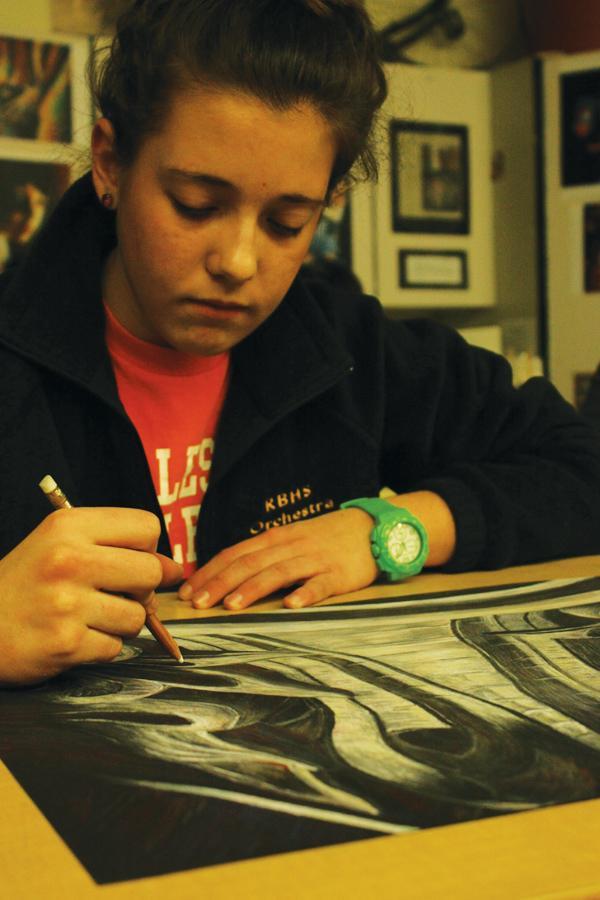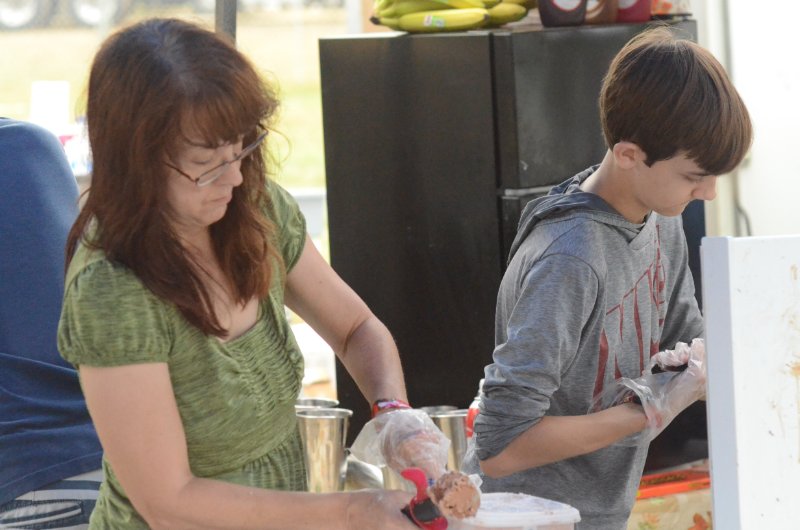
The appreciation she feels for antique architecture drives her artistic spirit to emphasize and proclaim its beauty and significance through artwork.
Since she was four, Trout has found comfort in the art of drawing. She used to demand pictures of her mother, which she would then fill in using the colors that pleased her eyes. A love for artistry also sprung from watching her father, grandfather and grandmother partake in creative endeavors.
Trout’s inspiration originated close to heart, so it’s no wonder she continues to love art today. Another source of inspiration comes from a city Trout would one day love to inhabit: Paris, France. The charm, beauty and art of the city captured Trout’s creative spirit and pushed her deep into a love for exquisitely constructed buildings.
“I love architecture; I like its form and all the different ornaments that are part of it,” Trout said. “Two hundred years ago they built buildings for beauty and to last. Old architecture has a story and so much history that goes along with it.”
A love for the art of construction manifested in looming cathedrals and grotesque gargoyles is just one part of the drive Trout has acquired through a knack for art. Her talent also serves as a source of relaxation, extracting stress and simply providing a meaningful pastime to busy her hands.
“She may be the only student I’ve had in 20 plus years of teaching that takes a historical perspective on her work. It all started with a trip to Europe,” said Sharon Hyatt-Wade, Trout’s advanced placement Art teacher. “She looked at the architecture and thought about all the families and lives and all the wars and the bombings and everything that’s happened in those structures. These structures are personified to her; they tell a story.”
While she uses art for its full advantage, she is also able to recognize a specific type of love through her recognition and attachment to architecture. Trout picks up on the subtle magnificence of a seemingly mundane subject.
“I value architecture as art because I know somebody spent a really long time designing that building,” Trout said. “They spent time constructing it and deciding what things they wanted to put on it, and what it’s function and form would be. “
Using mainly acrylic, graphite, and watercolor, Trout will revive columns from 12 different views as her project throughout the year.
“I’m doing the columns from different perspectives — different color themes, some aren’t realistic, others are more realistic, different moods and angles,” Trout said.
Although columns are important parts of architecture, they also represent and encompass the everlasting prominence of well-built structures as a whole.
“I think of columns as the foundation for buildings. After a fire, the columns are the only things that remain,” Trout said. “They symbolize architecture in the past – that its architecture was extremely strong, that even after a fire, something could still remain.”
Trout’s goal as an artistic mediator is to bring to the surface the value of beautiful architecture. With a heart full of deep appreciation and passion for architecture, Trout uses her own building blocks and creates masterpieces to give these structures the honor she believes they deserve.
“I want to make the images interesting to look at,” Trout said. “I’m trying to find different things to do that make them more than just columns.”
By Abbie Powers



















































































